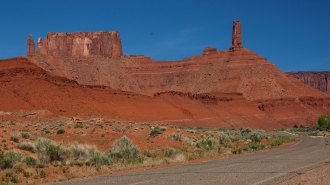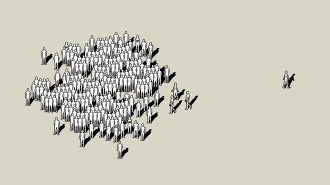Search Results
Extraordinary scientists are ordinary people
Help your students connect and relate to current scientists from diverse backgrounds with this activity. Students will then find articles about ongoing science research that links the work of the scientists to real-world questions. Learning outcomes: Basic collaboration and listening skills; ability to use a computer with internet access
Exploring materials
After reading a journalistic article about materials science and engineering over the last century, students will discuss and research why and how new materials are developed and how they transform society. Student groups will develop museum-style exhibits to communicate what they learned to the rest of the class.

Climbers Help Scientists Vibe With Utah’s Rocks
In this guide, students will learn about a citizen science project that is helping scientists better understand the physical properties of rock formations. Students will then explore other citizen science projects that they could participate in based on their hobbies and interests.
Citizens for science
Students will explore the concept of citizen science and use their hobbies and interests to find a citizen science project they could participate in.
Exploring STEM career paths
After considering their interests and skills, students will identify potential STEM careers that they might want to pursue and create a map or flowchart showing how they might reach that goal. Students will then use the Science News archive and other online resources to research a STEM professional whose career resembles one that students might choose for themselves.
Century of Science scavenger hunt
Students will use the clues provided and the Science News Century of Science website to explore how science advances. After making connections across scientific subtopics, student groups will research and present highlights of discoveries from an assigned decade.

- Educator Guide:Educator Guide
- Topic:Science & Society
- Category:Data Analysis
- Category:Research & Design
Look to the Outliers
In this guide, students will learn about outliers and why some social scientists study them in an effort to improve people’s lives.
Defying expectations
Students will answer questions about the online Science News article “Why do some people succeed when others fail? Outliers provide clues,” which describes how research into communities that defy expectations can reveal ways to help others.
All about outliers
Students will define what an outlier is and discuss why outliers occur, how to identify them and how they can be useful for science and society.
Examining bias through fossils
Students will learn about early evidence for human evolution, discuss how interpretations of data can be influenced by scientists’ biases and develop a framework for analyzing the physical features of hominin fossils.

- Educator Guide:Educator Guide
- Topic:Science & Society
- Category:Research & Design
- Category:Coronavirus
When Fans Are Away, Home Teams Lose Their Sway
In this guide, students will learn about scientific research into bias in sporting events that was made possible by the coronavirus pandemic. Then, students will define and discuss the role of questions in the scientific method before brainstorming a scientific question of their own.
Investigating bias with ‘ghost games’
Students will answer questions about the online Science News article “‘Ghost games’ spotlight the psychological effect fans have on referees,” which describes research into a phenomenon in sports known as home field advantage. A version of the story, “When fans are away, home teams lose their sway,” appears in the September 25, 2021 issue of Science News.